| Pages:
1
2
3
4
5 |
j_sum1
Administrator
       
Posts: 6218
Registered: 4-10-2014
Location: Unmoved
Member Is Offline
Mood: Organised
|
|
I came up with an ingenious idea when cleaning up some glassware the other day.
I had a 500mL flask with what seemed to be a particularly persistent deposit. I tried the usual routines -- hot soapy water, lots of mechanical
scrubbing, strong base, oven cleaner and as a last resort, piranha solution. Nothing I tried would remove the yellow-brown marks.
I was about to give up and then I tried scrubbing the outside of the flask. Worked like a charm.
|
|
|
Melgar
Anti-Spam Agent
    
Posts: 2004
Registered: 23-2-2010
Location: Connecticut
Member Is Offline
Mood: Estrified
|
|
Ah yes, I think we've all been there more times than we'd like to admit.
As far as your basic organic crud that's not very hard to get off, well, I realized at one point that I was wasting quite a bit of $20/gallon
isopropanol, methanol, and acetone just rinsing out organics. Switched to automotive windshield washer fluid as my cleaner of first resort, and I
have to say it's a great deal at $2 or so a gallon. I also use it as the coolant for distillation. One nice thing about it is that it doesn't leave
residue if you accidentally spill any. Also, mold and other microorganisms will grow in dilute isopropanol. Not so for methanol.
The first step in the process of learning something is admitting that you don't know it already.
I'm givin' the spam shields max power at full warp, but they just dinna have the power! We're gonna have to evacuate to new forum software!
|
|
|
CharlieA
National Hazard
   
Posts: 645
Registered: 11-8-2015
Location: Missouri, USA
Member Is Offline
Mood: No Mood
|
|
My go-to cleaning soap, after rinsing with an appropriate solvent, is "seventh generation dish detergent powder". Surprisingly (at least to me) the
list of ingredients given on the back of the box is the same as the list of ingredients in the SDS. It is phosphate-free (I guess the old Alconox has
bit the bullet? ). ).
|
|
|
Sulaiman
International Hazard
    
Posts: 3555
Registered: 8-2-2015
Location: 3rd rock from the sun
Member Is Offline
|
|
I have experimented with acids and bases, oxidisers, detergents ..
I find that whichever cleaning solution is used, mechanical scrubbing always helps a lot,
my favourite is c3mm soda glass beads http://www.ebay.co.uk/itm/FD4636-FLINT-GLASS-SODA-LIME-BEADS...
as they work well and so far show no signs of scratching my flasks insides.
Swirled - not shaken.
They are easy to rinse and re-use.
CAUTION : Hobby Chemist, not Professional or even Amateur
|
|
|
CobaltChloride
Hazard to Others
  
Posts: 239
Registered: 3-3-2018
Location: Romania
Member Is Offline
|
|
Cleaning a RBF
My distillation apparatus recently came so I decided to acquaint myself with it by distilling some tap water. After the distillation, I noticed there
are white streaks on the inside. I tried cleaning with hydrochloric acid as I thought it was some calcium carbonate/ magnesium carbonate, but it
didn't go away even after scrubbing with steel scrubbing pads. How do you think I could remove this? I noticed there are white deposits on my pots as
well that don't dissolve in HCl, so it's clearly something in the water. It could be calcium sulfate, which would mean it should be removed by hot,
concentrated sodium hydroxide (https://pubs.acs.org/doi/abs/10.1021/ie50436a015). What do you think I should use to remove it?
|
|
|
j_sum1
Administrator
       
Posts: 6218
Registered: 4-10-2014
Location: Unmoved
Member Is Offline
Mood: Organised
|
|
A new active discussion happening here:
https://www.sciencemadness.org/whisper/viewthread.php?tid=85...
No new methods suggested AFAICS and so I will leave that one alone for whatever discussion might ensue -- rather than merging it.
|
|
|
Melgar
Anti-Spam Agent
    
Posts: 2004
Registered: 23-2-2010
Location: Connecticut
Member Is Offline
Mood: Estrified
|
|
Using a sponge or a rag attached to the end of a stiff wire (like a coat hanger wire) works well for cleaning things like erlenmeyers and RBFs. You
bend it into whatever shape is best suited for reaching the spot you need to get, then work it into position.
The first step in the process of learning something is admitting that you don't know it already.
I'm givin' the spam shields max power at full warp, but they just dinna have the power! We're gonna have to evacuate to new forum software!
|
|
|
wg48
National Hazard
   
Posts: 821
Registered: 21-11-2015
Member Is Offline
Mood: No Mood
|
|
Quote: Originally posted by Melgar  | | Using a sponge or a rag attached to the end of a stiff wire (like a coat hanger wire) works well for cleaning things like erlenmeyers and RBFs. You
bend it into whatever shape is best suited for reaching the spot you need to get, then work it into position. |
A sccouring pad can also be used with this method.
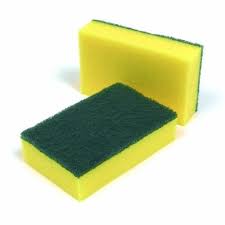 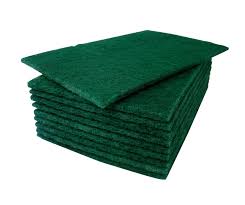
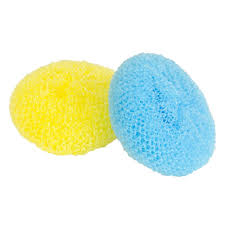 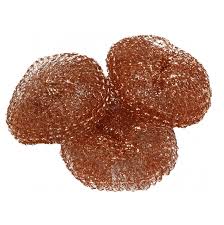
Also the sponge-backed pad when wet can be made to move round a spherical flask by vigorous shaking of the flask in a circular motion. Stainless steel
scouring pads can also be used but there is a risk of scratching the flask.
The scouring pad can also be tie wrapped round a metal weight and used as above.
Borosilicate glass:
Good temperature resistance and good thermal shock resistance but finite.
For normal, standard service typically 200-230°C, for short-term (minutes) service max 400°C
Maximum thermal shock resistance is 160°C
|
|
|
happyfooddance
National Hazard
   
Posts: 530
Registered: 9-11-2017
Location: Los Angeles, Ca.
Member Is Offline
Mood: No Mood
|
|
Quote: Originally posted by CobaltChloride  | | My distillation apparatus recently came so I decided to acquaint myself with it by distilling some tap water. After the distillation, I noticed there
are white streaks on the inside. I tried cleaning with hydrochloric acid as I thought it was some calcium carbonate/ magnesium carbonate, but it
didn't go away even after scrubbing with steel scrubbing pads. How do you think I could remove this? I noticed there are white deposits on my pots as
well that don't dissolve in HCl, so it's clearly something in the water. It could be calcium sulfate, which would mean it should be removed by hot,
concentrated sodium hydroxide (https://pubs.acs.org/doi/abs/10.1021/ie50436a015). What do you think I should use to remove it? |
I think it is calcium carbonate... Try hotter HCl. I didn't look at your link, but calcium sulfate is moderately soluble in boiling water, even a good
stream of hot water gets it all out any time I've dealt with. Calcium carbonate can be a pain, even with dilute HCl, but if you put 20% in your flask
and throw a reflux condenser on it and some heat under it, it should dissolve quickly.
|
|
|
JJay
International Hazard
    
Posts: 3440
Registered: 15-10-2015
Member Is Offline
|
|
It is essential to make sure that any traces of calcium are removed before trying things like chromic acid and piranha solution, or you risk forming
calcium sulfate, which sometimes sticks to glass. It can be hard to remove, but scrubbing will take it off.
I usually use dilute acetic acid to remove other calcium salts, but it can take a while to react sometimes.
[Edited on 20-7-2018 by JJay]
|
|
|
Mr. Rogers
Hazard to Others
  
Posts: 184
Registered: 30-10-2017
Location: Ammonia Avenue
Member Is Offline
Mood: No Mood
|
|
Wash Bottles --
Why are wash bottles for certain solvents made from incompatible materials?
Every compatibility chart for polypropylene states it will be attacked by acetone, but this is a common composition for acetone wash bottles? I have
to assume I'm reading something wrong or too far into this...?
[Edited on 10-9-2018 by Mr. Rogers]
|
|
|
CobaltChloride
Hazard to Others
  
Posts: 239
Registered: 3-3-2018
Location: Romania
Member Is Offline
|
|
I never saw any wash bottle made out of PP. All the wash bottles I saw were made of LDPE which is the ideal material for one because it reists
acetone, alcohols and water. It is also very flexible so you can squeeze the bottle. Are you sure the wash bottles you are looking at aren't LDPE?
|
|
|
wg48
National Hazard
   
Posts: 821
Registered: 21-11-2015
Member Is Offline
Mood: No Mood
|
|
Quote: Originally posted by Mr. Rogers  | Wash Bottles --
Why are wash bottles for certain solvents made from incompatible materials?
Every compatibility chart for polypropylene states it will be attacked by acetone, but this is a common composition for acetone wash bottles? I have
to assume I'm reading something wrong or too far into this...?
[Edited on 10-9-2018 by Mr. Rogers] |
My acetone arrived in what looks like a PP bottle and the last PP compatibility chart I read described its compatibility as excellent see: https://www.calpaclab.com/polypropylene-chemical-compatibili...
But then my real turpentine arrived in what looks PP but that chart described its compatibility as "Severe Effect" ??? I suspect it not pure
turpentine as it was from the same seller that sold me asphalt as a water soluble black wood dye.
Edit: From the same site it describes the compatibility of LDPP and HDPP as "at 20°C-50°C: damage may occur.
Not recommended for continuous use" see: https://www.calpaclab.com/chemical-compatibility-charts/
Apparently I reading wrong too LOL
[Edited on 10-9-2018 by wg48]
Borosilicate glass:
Good temperature resistance and good thermal shock resistance but finite.
For normal, standard service typically 200-230°C, for short-term (minutes) service max 400°C
Maximum thermal shock resistance is 160°C
|
|
|
Sulaiman
International Hazard
    
Posts: 3555
Registered: 8-2-2015
Location: 3rd rock from the sun
Member Is Offline
|
|
there is often a (recycling) resin identification code on plastic items
https://en.wikipedia.org/wiki/Resin_identification_code
|
|
|
wg48
National Hazard
   
Posts: 821
Registered: 21-11-2015
Member Is Offline
Mood: No Mood
|
|
Yes instead of guessing check the code.
The acetone is in a HDPE bottle. The real turpentine bottle has a triangle containing a "0", (no arrows) to the right is a "2" I suspect HDPE.
Borosilicate glass:
Good temperature resistance and good thermal shock resistance but finite.
For normal, standard service typically 200-230°C, for short-term (minutes) service max 400°C
Maximum thermal shock resistance is 160°C
|
|
|
CobaltChloride
Hazard to Others
  
Posts: 239
Registered: 3-3-2018
Location: Romania
Member Is Offline
|
|
I found a nice way of cleaning oxidized stainless steel crucibles. The oxide coating is calcined and doesn't dissolve in aqueous acids. However, I was
able to clean the bottom of my stainless steel crucible from oxides by covering the interior with a layer of ammonium chloride and then heating this
with a torch until it started emmiting a lot of smoke and then letting it cool down. I did this five times, then I rinsed out the ammonium chloride.
Much of the oxide coating had dissapered and I was able to remove the rest by just scrubbing with a brush and a bit of warm soapy water.
This procedure seems obvious now seeing as ammonium chloride is sold exactly for removing oxide coatings, but I didn't see it mentioned on the forum
so I thought I'd share it. Now I don't need to buy another salt shaker for doing reactions with molten alkali 
[Edited on 28-9-2018 by CobaltChloride]
|
|
|
Texium
|
Thread Moved
25-5-2019 at 07:26 |
pneumatician
Hazard to Others
  
Posts: 409
Registered: 27-5-2013
Location: Magonia
Member Is Offline
Mood: ■■■■■■■■■■ INRI ■■■■■■■■■■ ** Igne Natura Renovatur Integra **
|
|
I distilled tap water various times and the glass get a sticky white layer... not remoblable with nitric, sulfuric, chloridric...
|
|
|
monolithic
Hazard to Others
  
Posts: 435
Registered: 5-3-2018
Member Is Offline
Mood: No Mood
|
|
For anyone who cares, I found that Oxiclean (sodium percarbonate) works well for getting glassware sparkling clean. Mix with tap water, swirl around
every now and then for a total of a few hours, then rinse with tap water followed by distilled water. Before I used Oxiclean I would always get water
beading on glassware no matter how well I cleaned it with acid/base/acetone baths followed by distilled water rinses. Now I get absolutely clean
glassware with no water spots, no water residue, and no water beading.
Apparently it decomposes into hydrogen peroxide, so you might be able to get the same effect with dilute hydrogen peroxide. I just find storing a tub
of Oxiclean to be more convenient since you don't need very much (under 50 g) to make enough solution for a 1 liter flask.
[Edited on 8-14-2020 by monolithic]
|
|
|
1KEE
Harmless

Posts: 25
Registered: 23-2-2020
Member Is Offline
|
|
I've been having too much fun cleaning some rusty metal parts lately, thought I'd share my favorites.
Ultrasonic tank with hot (85 deg C) Alconox solution is one of them.... Works great on glass, works good on rusty and oily metal parts.
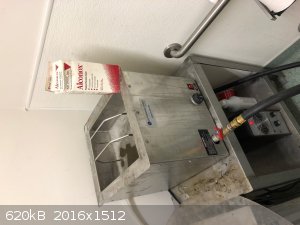
Added bonus, I've recently noticed that it removes rust, down to bare metal. Not sure if it's chemical or mechanical (from the ultrasonic) action.
Here are some parts that, 30 mins ago, were completely covered in rust.
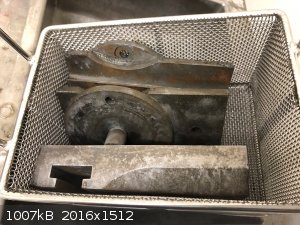
Downsides are it makes a lot of steam, I run it in the bathroom. The hot and slippery parts are hard to handle (specially if glass). And have to keep
stuff from touching other parts or the sides of the tank. I'm still trying to figure out a nice basket that's soft, and keeps parts separate. But hot
Alconox solution in ultrasonic tank, great for cleaning glass.
Now for extreme cleaning. This is a stainless steel glovebox what we charge with sodium- or potassium- hydroxide solution, and heat to like 90 deg C.
The solution goes though a filter and a 1000PSI pump, like a pressure washer
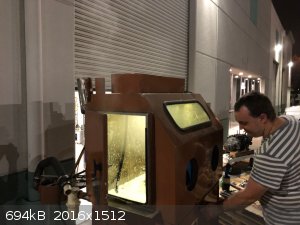
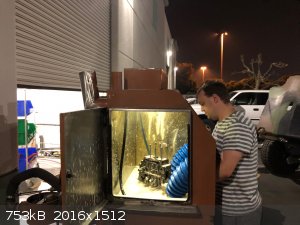
Cleaning parts from a sailboat diesel engine that's crusty inside with salt water deposits. It's a truly evil machine to use, the amount of steam that
comes out is ridiculous. I'm running it outside until I figure out ventilation. The hot solution under high pressure is hard on gloves (and on hands
under the gloves). Finding gloves that don't disintegrate is hard, plus I'd like to find something that insulates from the heat.
I would never dream of cleaning glass in the pressure blasting cabinet, things are slippery and the jet of solution will pop things out of your hand
and send it flying. But good for rebuilding machinery, engines, turbines, etc.
EDIT: one more thing. I'd be very hesitant to use Scotch-Brite (the green or brown scouring pads) on glass. These have an abrasive that's pretty
effective at scratching glass, making grime stick to the scratches next time, and weakens it.
[Edited on 10-5-2020 by 1KEE]
|
|
|
MidLifeChemist
Hazard to Others
  
Posts: 192
Registered: 4-7-2019
Location: West Coast USA
Member Is Offline
Mood: precipitatory
|
|
Yeah, soaking it in dilute vinegar for 24-48 hours (scrub and repeat if needed) is my method of choice for any kind of alkaline earth or metal salts,
and seems to work quite well.
Quote: Originally posted by JJay  | It is essential to make sure that any traces of calcium are removed before trying things like chromic acid and piranha solution, or you risk forming
calcium sulfate, which sometimes sticks to glass. It can be hard to remove, but scrubbing will take it off.
I usually use dilute acetic acid to remove other calcium salts, but it can take a while to react sometimes.
[Edited on 20-7-2018 by JJay] |
|
|
|
Fyndium
International Hazard
    
Posts: 1192
Registered: 12-7-2020
Location: Not in USA
Member Is Offline
|
|
Similar product outside US is sold as Oxi Action by vanish. I've noticed the same effect recently when making perborate from it.
At work (and at home too) I have used an acid paste that consists of nitric and hydrofluoric acid. It's the magic potion that makes stainless steel
look fabulous and shiny, after it's been oxidized by welding, seasoning or other reasons. It's a bit more hazardous to handle, but as a paste, it
fumes very little and avoiding breathing it and rinsing it well is good enough. It just eats the oxide layer off and you can pretty much see it
dissolve as you spread the paste. I seldom cleanse my crucibles because they get that oxide layer back at instant when heated, and are pretty much
passive after that.
|
|
|
MidLifeChemist
Hazard to Others
  
Posts: 192
Registered: 4-7-2019
Location: West Coast USA
Member Is Offline
Mood: precipitatory
|
|
Since we are talking about glassware, I'll share my recent experiences..
Soaking in dilute vinegar seems to work well for copper salts deposited on my glassware. For Iron (III) precipitates stuck on my glass and funnels,
vinegar worked not so well and I had to use dilute HCl, which dissolved it right away.
A little Sodium Thiosulfate took good care of any Iodine stains I had on glassware, but the damage the Iodine did to my metal spatulas looks more
permanent.
The water in our new place is very, very hard. The first few pieces of glassware I washed were covered in white spots / deposits from the hard water.
So now I'm starting to do a final rinse in distilled water, hopefully that cures that issue.
Well that's it for now, looking forward to reading about other people's glass cleaning adventures.
|
|
|
itsallgoodjames
Hazard to Others
  
Posts: 276
Registered: 31-8-2020
Location: America Lite
Member Is Offline
|
|
Quote: Originally posted by Antiswat  | Quote: Originally posted by MrHomeScientist  |
I have an anecdote I'd like to add to this. A friend of mine was etching circuit boards on his back porch and ended up with a lot of ferric chloride
stains on the concrete floor. He tried my oxalic acid on that, but it did not work to clear it up. The stain would seemingly disappear, but when the
deck was rinsed it would show up again. I think concrete is too porous for much of anything to work well. He might have to resort to using my
hydrochloric acid for the purpose it was intended - etching concrete!
I've also found that minor iron stains on glassware can be removed by a soak in hardware-store-grade HCl over a day or two. |
i think your mate may have a serious problem.. tell him to cover it up (:
as of what i have seen FeCl3 goes into Fe2O3 over time and thats really a bitch to attempt removing.. i got a table stained with that stuff all over,
to my luck its a smooth surface unlike concrete, where i can then use CaO + HCl method on it..
careful HCl etching (dilute?) and then sudden neutralization when wanted result is acquired might be the thing for him..
dont know how smooth concrete were talking about here tho
that last sentence sounded hilarious to me, no idea how tho.. |
I have a big patch of ferric chloride stains on my garage floor, as a reaction involving it boiled over around a year ago. I will not come off for
the life of it, no matter what I try. HCl, H3PO4, CH3COOH, nothing works  . I
guess that will forever be a testament to secondary containment for anything that has the possibility to boil over... . I
guess that will forever be a testament to secondary containment for anything that has the possibility to boil over...
(if you care, I was using it to catalytically decompose H2O2 to make oxygen for god knows what reason, but I didn't have the proper glassware at the
time, so I used a thin necked funnel to add the H2O2, a glass tube for the O2 to come out of, a quark to hold it all in place and an erlenmeyer to
contain the ferric chloride. I added way too much H2O2, way too quickly, generating tons of heat and gas, causing it to boil. Ferric chloride
solution began to flow/spray out the funnel, falling on the floor and making a 6 foot diameter stain that won't come off.)
Nuclear physics is neat. It's a shame it's so regulated...
Now that I think about it, that's probably a good thing. Still annoying though.
|
|
|
Fantasma4500
International Hazard
    
Posts: 1677
Registered: 12-12-2012
Location: Dysrope (aka europe)
Member Is Offline
Mood: dangerously practical
|
|
@itsallgoodjames thats odd, ive found H3PO4 working very well against iron oxide, but you do wanna scrub it while using it, sometimes 25%ish works
better than 80%
you might just wanna paint the whole floor over instead, a bit of grey paint or maybe cover it all in vinyl
i got a bottle of iron chloride, i recall mixing some H2O2 into it and immediatedly the iron oxide cleared up, maybe H2O2 + H3PO4 would do something
cool? maybe try running an oxy-acetylene burner on it to give it some carbon monoxide, and then dissolve the formed iron in acid
really concentrated H3PO4 should work if you leave it for long enough, maybe high pressure water cleaner would be a better idea
|
|
|
Hoffit
Harmless

Posts: 21
Registered: 12-8-2019
Member Is Offline
Mood: Excited
|
|
Quote: Originally posted by itsallgoodjames  | I have a big patch of ferric chloride stains on my garage floor, as a reaction involving it boiled over around a year ago. I will not come off for
the life of it, no matter what I try. HCl, H3PO4, CH3COOH, nothing works  . I
guess that will forever be a testament to secondary containment for anything that has the possibility to boil over... . I
guess that will forever be a testament to secondary containment for anything that has the possibility to boil over...
|
Complexing iron could do the trick. Some oxalic acid could do the trick I think. Commercial rust removers can give hints for other good complexing
agents.
|
|
|
| Pages:
1
2
3
4
5 |